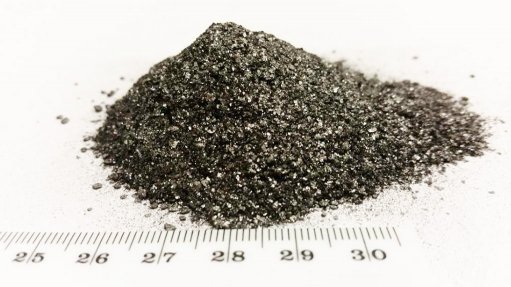Hydrogen instrumental to decarbonisation
The need to decarbonise has put pressure on governments globally to move away from fossil fuels and use renewable sources of energy, says mining employers’ organisation Minerals Council South Africa senior economist Bongani Motsa.
Through global research it has been established that hydrogen is one of the most viable options to successfully effect decarbonisation, he says.
Recognising this challenge, multinational precious metals miner Sibanye Stillwater has partnered with precious metals services provider Heraeus Precious Metals to develop a low-cost and efficient electrolyser.
Motsa says the costs of electrolysers and renewable electricity account for about 60% of the cost of green hydrogen production.
Several countries and private companies are aiming to lower these costs by aggressively embarking on research and development (R&D) for electrolysers.
“As a nascent industry, hydrogen will need a lot of government support and incentives,” he suggests.
To lower cost of investment and mitigate the risks associated with the budding industry, government will have to co-invest in aspects of the value chain, beneficially signalling to the private sector that government is committed to developing the industry.
While government has committed R1.16-billion to the development of the hydrogen economy, competing countries have invested substantially more through government funds and green initiatives.
Motsa stresses that, beyond policy, proper signalling by government should go beyond merely creating an enabling and predictable policy environment and suggests that a hydrogen champion should be appointed at director-general or ministerial level.
Global Progress
Motsa tells Mining Weekly that Namibia has awarded contracts worth $10-billion to two bidders to develop green hydrogen projects, while the Chilean government has made $193-million available for R&D in the green hydrogen space.
Germany, Europe’s biggest economy, has signed a hydrogen supply agreement with Canada, with deliveries expected in 2025, and launched a fleet of 14 trains, at a cost of €93-million, running entirely on hydrogen, last month.
“This presents an opportunity for South Africa, as the hydrogen used to power these trains is not particularly carbon-free, as it is produced from fossil fuels,” he adds.
In comparison, by the end of 2021, the US boasted about 166 operating fuel cell electric power generators at 113 facilities with a total of about 260 MW of electric generation capacity.
“Interestingly, of the about 48 hydrogen vehicle fuelling stations in the US, nearly all are located in California,” he points out.
Texas is the US’ largest hydrogen producer, owing to its substantial petrochemical sector.
The sector primarily uses cheap natural gas as a feedstock through a carbon dioxide-emitting process, called steam methane reforming, which presents an export opportunity for South Africa in terms of supplying the US market with green hydrogen.
Moreover, earlier this year, China commissioned the world’s largest green hydrogen project, with a 150 MW alkaline electrolyser, which is powered by a 200 MW solar array.
Additionally, Chinese oil giant Sinopec is constructing a larger alkaline electrolyser facility of 260 MW in Xinjiang, in north-west China, which is expected to be completed in mid-2023.
The facility will be powered by nearly equal amounts of solar power, derived from an on-site 300 MW array, and will produce 20 000 t of green hydrogen a year.
Motsa says all these countries, and others, are incentivising the development of a hydrogen economy and suggests that South Africa could also grow gainfully.
“The mining sector has shown commitment to developing the hydrogen economy and the mining houses would benefit from hydrogen-specific incentives,” he concludes.
Comments
Press Office
Announcements
What's On
Subscribe to improve your user experience...
Option 1 (equivalent of R125 a month):
Receive a weekly copy of Creamer Media's Engineering News & Mining Weekly magazine
(print copy for those in South Africa and e-magazine for those outside of South Africa)
Receive daily email newsletters
Access to full search results
Access archive of magazine back copies
Access to Projects in Progress
Access to ONE Research Report of your choice in PDF format
Option 2 (equivalent of R375 a month):
All benefits from Option 1
PLUS
Access to Creamer Media's Research Channel Africa for ALL Research Reports, in PDF format, on various industrial and mining sectors
including Electricity; Water; Energy Transition; Hydrogen; Roads, Rail and Ports; Coal; Gold; Platinum; Battery Metals; etc.
Already a subscriber?
Forgotten your password?
Receive weekly copy of Creamer Media's Engineering News & Mining Weekly magazine (print copy for those in South Africa and e-magazine for those outside of South Africa)
➕
Recieve daily email newsletters
➕
Access to full search results
➕
Access archive of magazine back copies
➕
Access to Projects in Progress
➕
Access to ONE Research Report of your choice in PDF format
RESEARCH CHANNEL AFRICA
R4500 (equivalent of R375 a month)
SUBSCRIBEAll benefits from Option 1
➕
Access to Creamer Media's Research Channel Africa for ALL Research Reports on various industrial and mining sectors, in PDF format, including on:
Electricity
➕
Water
➕
Energy Transition
➕
Hydrogen
➕
Roads, Rail and Ports
➕
Coal
➕
Gold
➕
Platinum
➕
Battery Metals
➕
etc.
Receive all benefits from Option 1 or Option 2 delivered to numerous people at your company
➕
Multiple User names and Passwords for simultaneous log-ins
➕
Intranet integration access to all in your organisation


















